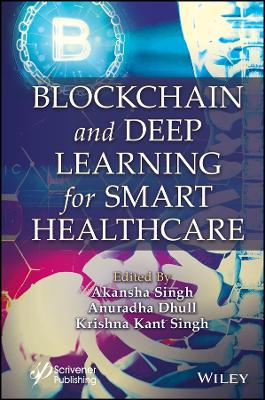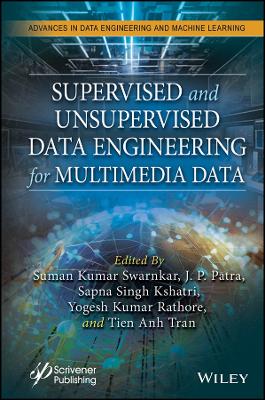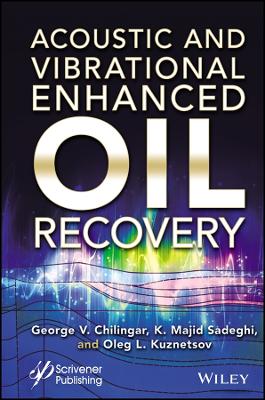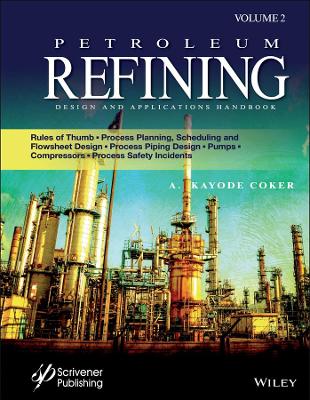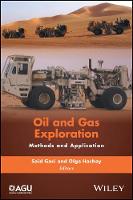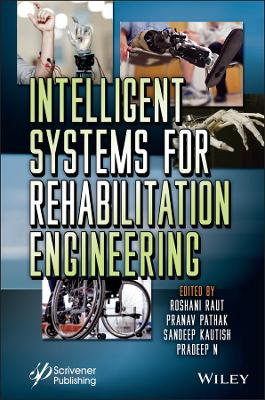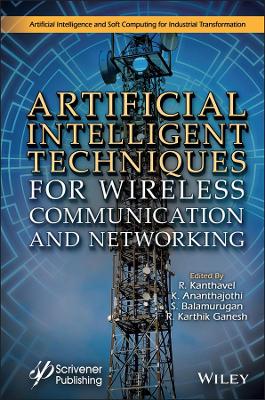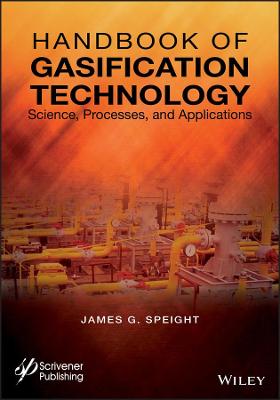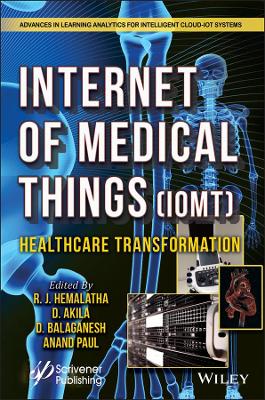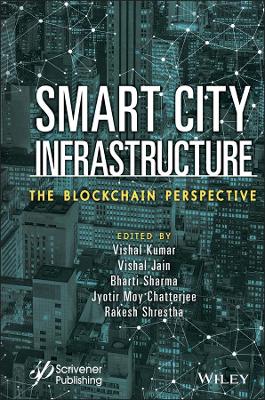Power of Artificial Intelligence for the Next-Generation Oil and Gas Industry
 -15%
portes grátis
-15%
portes grátis
Power of Artificial Intelligence for the Next-Generation Oil and Gas Industry
Envisaging AI-inspired Intelligent Energy Systems and Environments
Cyriac, Robin; Sundaravadivazhagan, B.; Agerstam, Mats; Chelliah, Pethuru Raj; Jayasankar, Venkatraman
John Wiley & Sons Inc
11/2023
512
Dura
Inglês
9781119985587
15 a 20 dias
Foreword xxv
Preface xxvii
1 A Perspective of the Oil and Gas Industry 1
1.1 Exploration and Production 2
1.2 Midstream Transportation 4
1.3 Downstream-Refining and Marketing 6
1.4 Meaning of Different Terms of Products Produced by the Oil and Gas Industry 7
1.5 Oil and Gas Pricing 16
1.6 A Note on Renewable Energy Sources 17
1.7 Environmental Impact 20
1.8 Uses of Hydrogen 20
2 Artificial Intelligence (AI) for the Future of the Oil and Gas (O&G) Industry 23
2.1 Introduction 23
2.2 The Emergence of Digitization Technologies and Tools 24
2.3 Demystifying Digitalization Technologies and Tools 25
2.4 Briefing the Potentials of Artificial Intelligence (AI) 25
2.5 AI for the Oil and Gas (O&G) Industry 27
2.6 Computer Vision (CV)-Enabled Use Cases 34
2.7 Natural Language Processing (NLP) Use Cases 36
2.8 Robots in the Oil and Gas Industry 36
2.9 Drones in the Oil and Gas Industry 37
2.10 AI Applications for the Oil and Gas (O&G) Industry 39
2.11 Better Decision-Making Using AI 41
2.12 Cloud AI vs. Edge AI for the Oil and Gas Industry 44
2.13 AI Model Optimization Techniques 47
2.14 Conclusion 48
3 Artificial Intelligence for Sophisticated Applications in the Oil and Gas Industry 51
3.1 Introduction 51
3.2 Oil and Gas Industry 52
3.3 Artificial Intelligence 54
3.4 Lifecycle of Oil and Gas Industry 54
3.5 Applications of AI in Oil and Gas industry 56
3.6 Chatbots 56
3.7 Optimized Procurement 59
3.8 Drilling, Production, and Reservoir Management 61
3.9 Inventory Management 62
3.10 Well Monitoring 64
3.11 Process Excellence and Automation 64
3.12 Asset Tracking and Maintenance/Digital Twins 65
3.13 Optimizing Production and Scheduling 67
3.14 Emission Tracking 68
3.15 Logistics Network Optimizations 69
3.16 Conclusion 70
4 Demystifying the Oil and Gas Exploration and Extraction Process 73
4.1 Process of Crude Oil Formation 73
4.2 Composition of Crude Oil 74
4.3 Crude Oil Classification 74
4.4 Crude Oil Production Process 76
4.5 Oil Exploration 77
4.6 Oil Extraction 78
4.7 Processing of Crude Oil 81
4.8 Overview of Refining 88
4.9 Marketing and Distribution of Oil and Gas 92
4.10 End of Production 93
4.11 Factors Influencing the Timing of Oil and Gas Exploration and Production 93
4.12 Non-revenue Benefits of the Oil and Gas Industry 95
4.13 Conclusion 95
5 Explaining the Midstream Activities in the Oil and Gas Domain 97
5.1 Introduction 97
5.2 Role of Midstream Sector in Oil and Gas Industry 98
5.3 Midstream Oil and Gas Operations 99
5.4 Technological Advancements in Midstream Sector 104
5.5 Midstream Sector Challenges 111
5.6 Conclusion 114
6 The Significance of the Industrial Internet of Things (IIoT) for the Oil and Gas Space 117
6.1 Overview of IIoT 117
6.2 Technical Innovators of Industrial Internet 125
6.3 IoT for Oil and Gas Sector 127
6.4 Rebellion of IoT in the Oil and Gas Sector 132
6.5 Oil and Gas Remote Monitoring Systems 136
6.6 Advantages of IIOT for the Oil and Gas Industry 142
6.7 Conclusion 144
7 The Power of Edge AI Technologies for Real-Time Use Cases in the Oil and Gas Domain 147
7.1 Introduction 147
7.2 Demystifying the Paradigm of Artificial Intelligence (AI) 148
7.3 Describing the Phenomenon of Edge Computing 149
7.4 Delineating Edge Computing Advantages 151
7.5 Demarcating the Move Toward Edge AI 154
7.6 Why Edge AI Gains Momentum? 155
7.7 The Enablers of Edge AI 160
7.8 5G-Advanced Communication 160
7.9 Why Edge AI is Being Pursued with Alacrity? 164
7.10 Edge AI Frameworks and Accelerators 165
7.11 Conclusion 175
8 AI-Enabled Robots for Automating Oil and Gas Operations 177
8.1 Briefing the Impending Digital Era 177
8.2 Depicting the Digital Power 178
8.3 Robotics: The Use Cases 181
8.4 Real-Life Examples of Robotic Solutions in the Oil and Gas Industry 184
8.5 The Advantages of Robotic Solutions 190
8.6 The Dawn of the Internet of Robotic Things 194
8.7 Conclusion 197
9 AI-Empowered Drones for Versatile Oil and Gas Use Cases 199
9.1 Introduction 199
9.2 The Upstream Process 200
9.3 The Midstream Process 201
9.4 The Downstream Process 202
9.5 Navigation Technologies for Drones 202
9.6 Drones Specialities and Successes 206
9.7 The Emergence of State-of-the-Art Drones 209
9.8 Drones in the Oil and Gas Industry 215
9.9 AI-Enabled Drone Services 217
9.10 AI Platforms for Drones 219
9.11 Conclusion 222
10 The Importance of Artificial Intelligence for the Oil and Gas Industry 224
10.1 Introduction 224
10.2 Reducing Well/Equipment Downtime 225
10.3 Optimizing Production and Scheduling 228
10.4 Detecting Anomalies by Enabling Automation in Assets using Robots 230
10.5 Inspection and Cleanliness of Reactors, Heat Exchangers, and Its Components 233
10.6 AI-Enabled Training and Safety 234
10.7 Summary 234
11 Illustrating the 5G Communication Capabilities for the Future of the Oil and Gas Industry 237
11.1 Introduction to 5G Communication 237
11.2 5G Architecture 243
11.3 Antennas For 5G 246
11.4 5G Use Cases 247
11.5 5G and Digitalization in Oil and Gas 252
11.6 5G Smart Monitoring Instruments 259
11.7 Conclusion 260
12 Delineating the Cloud and Edge-Native Technologies for Intelligent Oil and Gas Systems 263
12.1 Introduction 263
12.2 Cloud Native Technologies - Motivation 264
12.3 Containers 265
12.4 Microservices 268
12.5 Continuous Integration, Continuous Deployment (CI/CD) 274
12.6 Edge Computing 277
12.7 Conclusion 292
13 Explaining the Industrial IoT Standardization Efforts Toward Interoperability 293
13.1 Introduction 293
13.2 Different Aspects of Interoperability 293
13.3 ISA95 294
13.4 SCADA (Supervisory Control and Data Acquisition) 296
13.5 The Choice of Network Technology 296
13.6 OPAF 302
13.7 OPC-UA 305
13.8 DDS 310
13.9 Integration with Telemetry and Big Data 311
13.10 IEC Standards used in the OPAF 311
13.11 RedFish 312
13.12 The FieldComm Group 314
14 Digital Twins for the Digitally Transformed O&G Industry 316
14.1 Digital Twins (DTs) 316
14.2 Digital Twins in Manufacturing 316
14.3 Digital Twins in Process Efficiency 317
14.4 Digital Twins and Quality Assurance 317
14.5 Digital Twins and Supply Chain 317
14.6 Digital Twins and Predictive Maintenance 317
14.7 Industry 4.0 318
14.8 Digital Twin Concept 319
14.9 Standards and Interoperability 320
14.10 IDTA Standard 321
14.11 Digital Twin Consortium 322
14.12 Digital Twin in O&G 322
14.13 DT Complexity and Trade-offs 323
14.14 Architectural Concepts 323
14.15 Simulations 324
14.16 Digital Twins vs. Simulations 327
14.17 Digital Twin Products 328
14.18 Digital Twins and Manufacturing in the Future 329
15 IoT Edge Security Methods for Secure and Safe Oil and Gas Environments 331
15.1 Introduction 331
15.2 Protecting Data 332
15.3 Past Examples of Security Attacks 332
15.4 Security Foundation 334
15.5 Cryptographic Hash Function 337
15.6 Keyed Hash Message Authentication Code 338
15.7 Public Key Infrastructure (PKI) 338
15.8 Digital Signatures 340
15.9 Threat Analysis and Understanding Adversaries 341
15.10 Trusted Computing Base 342
15.11 Edge Security and RoT (Root of Trust) 342
15.12 DICE - Device Identifier Composition Engine 343
15.13 Boot Integrity 343
15.14 Data Sanitization 345
15.15 Total Memory Encryption 346
15.16 Secure Device Onboarding 347
15.17 Attestation 350
15.18 Defense in Depth 352
15.19 Zero Trust Architecture (ZTA) 354
15.20 Security Hardened Edge Compute Architectures 354
16 Securing the Energy Industry with AI-Powered Cybersecurity Solutions 356
16.1 Introduction 356
16.2 Energy Industry 357
16.3 Present and Future of Energy Industry Supply Chain 359
16.4 Cybersecurity 361
16.5 Digitizing of the Energy Industry 364
16.6 MITRE ATT&CK Framework 367
16.7 CVE 368
16.8 CWE 370
16.9 CAPEC 370
16.10 CPE 370
16.11 Cybersecurity Framework 370
16.12 NIST Framework 371
16.13 Zero-Day Vulnerability 372
16.14 Machine Learning 373
16.15 Artificial Intelligence 374
16.16 Fusing AI into Cybersecurity 375
16.17 Threat Modeling in AI 379
16.18 Incident Response 382
16.19 Fire Sale Scenario 383
16.20 Conclusion 384
17 Explainable Artificial Intelligence (XAI) for the Trust and Transparency of the Oil and Gas Systems 387
17.1 Introduction 387
17.2 The Growing Power of Artificial Intelligence 388
17.3 The Challenges and Concerns of Artificial Intelligence 390
17.4 About the Need for AI Explainability 391
17.5 AI Explainability: The Problem It Solves 392
17.6 What is the AI Explainability Challenges? 393
17.7 The Importance of Explainable AI 393
17.8 The Importance of Model Interpretation 396
17.9 Briefing Feature Importance Scoring Methods 401
17.10 Local Interpretable Model-agnostic Explanations (LIME) 402
17.11 SHAP Explainability Algorithm 404
17.12 Conclusion 407
18 Blockchain for Enhanced Efficiency, Trust, and Transparency in the Oil and Gas Domain 409
18.1 Introduction 409
18.2 The Brewing Challenges of the Oil and Gas Industry 410
18.3 About the Blockchain Technology 413
18.4 Blockchain-Powered Use Cases for the Oil and Gas Industry 415
18.5 Blockchain for Improved Trust 416
18.6 Sensor-Enabled Invoicing 417
18.7 Transportation Tracing 418
18.8 Data Storage and Management 419
18.9 Digital Oil and Gas: Strengthening and Simplifying Supply Chain 419
18.10 Commodity Trading 421
18.11 Land Record Management 421
18.12 Financial Reconciliation 422
18.13 Oil Wells and Equipment Maintenance 423
18.14 Waste Management and Recycling 423
18.15 Tracking Carbon Footprint 424
18.16 Improved Pipeline Inspection 424
18.17 Other Miscellaneous Advantages of Blockchain 425
18.18 Blockchain Challenges 425
18.19 Conclusion 426
19 AI-Inspired Digital Twins for the Oil and Gas Domain 428
19.1 How to Ensure Certainty Using DT for AI 432
19.2 Tools Needed to Develop Digital Twins 434
19.3 Digital Twin Implementation Approach at a High Level 434
19.4 Digital Twin of Oil and Gas Production 441
19.5 Solution Approach 442
19.6 Future of Digital Twins 443
20 Future Directions of Green Hydrogen and Other Fueling Sources 447
20.1 Introduction 447
20.2 Green Hydrogen Technologies 448
20.3 Current and Future Industrial Applications of Hydrogen 449
20.4 The Exploitation of Hydrogen Fuel in a Future System 450
20.5 Green Hydrogen: Fuel of the Future 451
20.6 Extraction of Hydrogen with Diagrammatic Representation 453
20.7 Hydrogen Fuel System Advantages and Disadvantages 454
20.8 AI-Based Approach for Emerging Green Hydrogen Technologies for Sustainability 455
20.9 Challenges of Hydrogen with AI Technologies 458
20.10 The Expected Use and Forecast for Hydrogen Fuel Cells in the Future 458
20.11 Conclusion 459
Bibliography 460
Index 461
Foreword xxv
Preface xxvii
1 A Perspective of the Oil and Gas Industry 1
1.1 Exploration and Production 2
1.2 Midstream Transportation 4
1.3 Downstream-Refining and Marketing 6
1.4 Meaning of Different Terms of Products Produced by the Oil and Gas Industry 7
1.5 Oil and Gas Pricing 16
1.6 A Note on Renewable Energy Sources 17
1.7 Environmental Impact 20
1.8 Uses of Hydrogen 20
2 Artificial Intelligence (AI) for the Future of the Oil and Gas (O&G) Industry 23
2.1 Introduction 23
2.2 The Emergence of Digitization Technologies and Tools 24
2.3 Demystifying Digitalization Technologies and Tools 25
2.4 Briefing the Potentials of Artificial Intelligence (AI) 25
2.5 AI for the Oil and Gas (O&G) Industry 27
2.6 Computer Vision (CV)-Enabled Use Cases 34
2.7 Natural Language Processing (NLP) Use Cases 36
2.8 Robots in the Oil and Gas Industry 36
2.9 Drones in the Oil and Gas Industry 37
2.10 AI Applications for the Oil and Gas (O&G) Industry 39
2.11 Better Decision-Making Using AI 41
2.12 Cloud AI vs. Edge AI for the Oil and Gas Industry 44
2.13 AI Model Optimization Techniques 47
2.14 Conclusion 48
3 Artificial Intelligence for Sophisticated Applications in the Oil and Gas Industry 51
3.1 Introduction 51
3.2 Oil and Gas Industry 52
3.3 Artificial Intelligence 54
3.4 Lifecycle of Oil and Gas Industry 54
3.5 Applications of AI in Oil and Gas industry 56
3.6 Chatbots 56
3.7 Optimized Procurement 59
3.8 Drilling, Production, and Reservoir Management 61
3.9 Inventory Management 62
3.10 Well Monitoring 64
3.11 Process Excellence and Automation 64
3.12 Asset Tracking and Maintenance/Digital Twins 65
3.13 Optimizing Production and Scheduling 67
3.14 Emission Tracking 68
3.15 Logistics Network Optimizations 69
3.16 Conclusion 70
4 Demystifying the Oil and Gas Exploration and Extraction Process 73
4.1 Process of Crude Oil Formation 73
4.2 Composition of Crude Oil 74
4.3 Crude Oil Classification 74
4.4 Crude Oil Production Process 76
4.5 Oil Exploration 77
4.6 Oil Extraction 78
4.7 Processing of Crude Oil 81
4.8 Overview of Refining 88
4.9 Marketing and Distribution of Oil and Gas 92
4.10 End of Production 93
4.11 Factors Influencing the Timing of Oil and Gas Exploration and Production 93
4.12 Non-revenue Benefits of the Oil and Gas Industry 95
4.13 Conclusion 95
5 Explaining the Midstream Activities in the Oil and Gas Domain 97
5.1 Introduction 97
5.2 Role of Midstream Sector in Oil and Gas Industry 98
5.3 Midstream Oil and Gas Operations 99
5.4 Technological Advancements in Midstream Sector 104
5.5 Midstream Sector Challenges 111
5.6 Conclusion 114
6 The Significance of the Industrial Internet of Things (IIoT) for the Oil and Gas Space 117
6.1 Overview of IIoT 117
6.2 Technical Innovators of Industrial Internet 125
6.3 IoT for Oil and Gas Sector 127
6.4 Rebellion of IoT in the Oil and Gas Sector 132
6.5 Oil and Gas Remote Monitoring Systems 136
6.6 Advantages of IIOT for the Oil and Gas Industry 142
6.7 Conclusion 144
7 The Power of Edge AI Technologies for Real-Time Use Cases in the Oil and Gas Domain 147
7.1 Introduction 147
7.2 Demystifying the Paradigm of Artificial Intelligence (AI) 148
7.3 Describing the Phenomenon of Edge Computing 149
7.4 Delineating Edge Computing Advantages 151
7.5 Demarcating the Move Toward Edge AI 154
7.6 Why Edge AI Gains Momentum? 155
7.7 The Enablers of Edge AI 160
7.8 5G-Advanced Communication 160
7.9 Why Edge AI is Being Pursued with Alacrity? 164
7.10 Edge AI Frameworks and Accelerators 165
7.11 Conclusion 175
8 AI-Enabled Robots for Automating Oil and Gas Operations 177
8.1 Briefing the Impending Digital Era 177
8.2 Depicting the Digital Power 178
8.3 Robotics: The Use Cases 181
8.4 Real-Life Examples of Robotic Solutions in the Oil and Gas Industry 184
8.5 The Advantages of Robotic Solutions 190
8.6 The Dawn of the Internet of Robotic Things 194
8.7 Conclusion 197
9 AI-Empowered Drones for Versatile Oil and Gas Use Cases 199
9.1 Introduction 199
9.2 The Upstream Process 200
9.3 The Midstream Process 201
9.4 The Downstream Process 202
9.5 Navigation Technologies for Drones 202
9.6 Drones Specialities and Successes 206
9.7 The Emergence of State-of-the-Art Drones 209
9.8 Drones in the Oil and Gas Industry 215
9.9 AI-Enabled Drone Services 217
9.10 AI Platforms for Drones 219
9.11 Conclusion 222
10 The Importance of Artificial Intelligence for the Oil and Gas Industry 224
10.1 Introduction 224
10.2 Reducing Well/Equipment Downtime 225
10.3 Optimizing Production and Scheduling 228
10.4 Detecting Anomalies by Enabling Automation in Assets using Robots 230
10.5 Inspection and Cleanliness of Reactors, Heat Exchangers, and Its Components 233
10.6 AI-Enabled Training and Safety 234
10.7 Summary 234
11 Illustrating the 5G Communication Capabilities for the Future of the Oil and Gas Industry 237
11.1 Introduction to 5G Communication 237
11.2 5G Architecture 243
11.3 Antennas For 5G 246
11.4 5G Use Cases 247
11.5 5G and Digitalization in Oil and Gas 252
11.6 5G Smart Monitoring Instruments 259
11.7 Conclusion 260
12 Delineating the Cloud and Edge-Native Technologies for Intelligent Oil and Gas Systems 263
12.1 Introduction 263
12.2 Cloud Native Technologies - Motivation 264
12.3 Containers 265
12.4 Microservices 268
12.5 Continuous Integration, Continuous Deployment (CI/CD) 274
12.6 Edge Computing 277
12.7 Conclusion 292
13 Explaining the Industrial IoT Standardization Efforts Toward Interoperability 293
13.1 Introduction 293
13.2 Different Aspects of Interoperability 293
13.3 ISA95 294
13.4 SCADA (Supervisory Control and Data Acquisition) 296
13.5 The Choice of Network Technology 296
13.6 OPAF 302
13.7 OPC-UA 305
13.8 DDS 310
13.9 Integration with Telemetry and Big Data 311
13.10 IEC Standards used in the OPAF 311
13.11 RedFish 312
13.12 The FieldComm Group 314
14 Digital Twins for the Digitally Transformed O&G Industry 316
14.1 Digital Twins (DTs) 316
14.2 Digital Twins in Manufacturing 316
14.3 Digital Twins in Process Efficiency 317
14.4 Digital Twins and Quality Assurance 317
14.5 Digital Twins and Supply Chain 317
14.6 Digital Twins and Predictive Maintenance 317
14.7 Industry 4.0 318
14.8 Digital Twin Concept 319
14.9 Standards and Interoperability 320
14.10 IDTA Standard 321
14.11 Digital Twin Consortium 322
14.12 Digital Twin in O&G 322
14.13 DT Complexity and Trade-offs 323
14.14 Architectural Concepts 323
14.15 Simulations 324
14.16 Digital Twins vs. Simulations 327
14.17 Digital Twin Products 328
14.18 Digital Twins and Manufacturing in the Future 329
15 IoT Edge Security Methods for Secure and Safe Oil and Gas Environments 331
15.1 Introduction 331
15.2 Protecting Data 332
15.3 Past Examples of Security Attacks 332
15.4 Security Foundation 334
15.5 Cryptographic Hash Function 337
15.6 Keyed Hash Message Authentication Code 338
15.7 Public Key Infrastructure (PKI) 338
15.8 Digital Signatures 340
15.9 Threat Analysis and Understanding Adversaries 341
15.10 Trusted Computing Base 342
15.11 Edge Security and RoT (Root of Trust) 342
15.12 DICE - Device Identifier Composition Engine 343
15.13 Boot Integrity 343
15.14 Data Sanitization 345
15.15 Total Memory Encryption 346
15.16 Secure Device Onboarding 347
15.17 Attestation 350
15.18 Defense in Depth 352
15.19 Zero Trust Architecture (ZTA) 354
15.20 Security Hardened Edge Compute Architectures 354
16 Securing the Energy Industry with AI-Powered Cybersecurity Solutions 356
16.1 Introduction 356
16.2 Energy Industry 357
16.3 Present and Future of Energy Industry Supply Chain 359
16.4 Cybersecurity 361
16.5 Digitizing of the Energy Industry 364
16.6 MITRE ATT&CK Framework 367
16.7 CVE 368
16.8 CWE 370
16.9 CAPEC 370
16.10 CPE 370
16.11 Cybersecurity Framework 370
16.12 NIST Framework 371
16.13 Zero-Day Vulnerability 372
16.14 Machine Learning 373
16.15 Artificial Intelligence 374
16.16 Fusing AI into Cybersecurity 375
16.17 Threat Modeling in AI 379
16.18 Incident Response 382
16.19 Fire Sale Scenario 383
16.20 Conclusion 384
17 Explainable Artificial Intelligence (XAI) for the Trust and Transparency of the Oil and Gas Systems 387
17.1 Introduction 387
17.2 The Growing Power of Artificial Intelligence 388
17.3 The Challenges and Concerns of Artificial Intelligence 390
17.4 About the Need for AI Explainability 391
17.5 AI Explainability: The Problem It Solves 392
17.6 What is the AI Explainability Challenges? 393
17.7 The Importance of Explainable AI 393
17.8 The Importance of Model Interpretation 396
17.9 Briefing Feature Importance Scoring Methods 401
17.10 Local Interpretable Model-agnostic Explanations (LIME) 402
17.11 SHAP Explainability Algorithm 404
17.12 Conclusion 407
18 Blockchain for Enhanced Efficiency, Trust, and Transparency in the Oil and Gas Domain 409
18.1 Introduction 409
18.2 The Brewing Challenges of the Oil and Gas Industry 410
18.3 About the Blockchain Technology 413
18.4 Blockchain-Powered Use Cases for the Oil and Gas Industry 415
18.5 Blockchain for Improved Trust 416
18.6 Sensor-Enabled Invoicing 417
18.7 Transportation Tracing 418
18.8 Data Storage and Management 419
18.9 Digital Oil and Gas: Strengthening and Simplifying Supply Chain 419
18.10 Commodity Trading 421
18.11 Land Record Management 421
18.12 Financial Reconciliation 422
18.13 Oil Wells and Equipment Maintenance 423
18.14 Waste Management and Recycling 423
18.15 Tracking Carbon Footprint 424
18.16 Improved Pipeline Inspection 424
18.17 Other Miscellaneous Advantages of Blockchain 425
18.18 Blockchain Challenges 425
18.19 Conclusion 426
19 AI-Inspired Digital Twins for the Oil and Gas Domain 428
19.1 How to Ensure Certainty Using DT for AI 432
19.2 Tools Needed to Develop Digital Twins 434
19.3 Digital Twin Implementation Approach at a High Level 434
19.4 Digital Twin of Oil and Gas Production 441
19.5 Solution Approach 442
19.6 Future of Digital Twins 443
20 Future Directions of Green Hydrogen and Other Fueling Sources 447
20.1 Introduction 447
20.2 Green Hydrogen Technologies 448
20.3 Current and Future Industrial Applications of Hydrogen 449
20.4 The Exploitation of Hydrogen Fuel in a Future System 450
20.5 Green Hydrogen: Fuel of the Future 451
20.6 Extraction of Hydrogen with Diagrammatic Representation 453
20.7 Hydrogen Fuel System Advantages and Disadvantages 454
20.8 AI-Based Approach for Emerging Green Hydrogen Technologies for Sustainability 455
20.9 Challenges of Hydrogen with AI Technologies 458
20.10 The Expected Use and Forecast for Hydrogen Fuel Cells in the Future 458
20.11 Conclusion 459
Bibliography 460
Index 461


